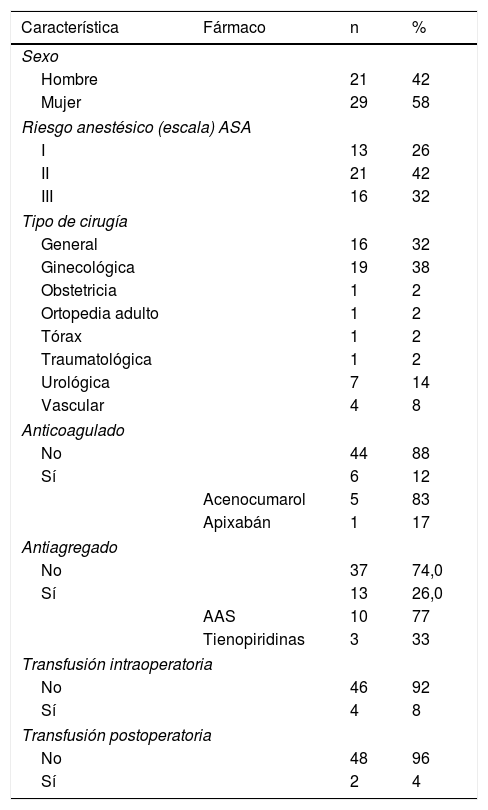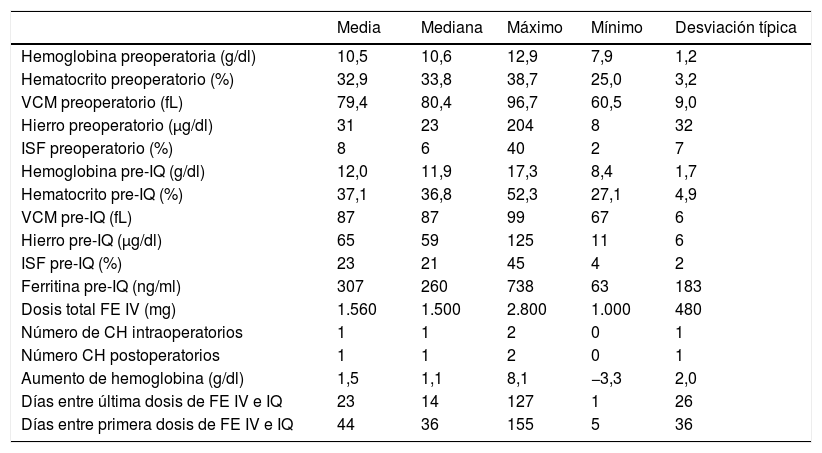Describir la prevalencia de transfusión sanguínea (TS) perioperatoria en pacientes con anemia ferropénica preoperatoria y sometidos a cirugía mayor electiva, incluidos en un protocolo de hierro intravenoso (FE IV) liderado por la enfermera de preanestesia.
MétodoEstudio descriptivo, observacional, longitudinal y retrospectivo en una población de pacientes sometidos a cirugía mayor electiva, vistos en consulta de enfermería de anestesia en un hospital de tercer nivel entre abril de 2014 y enero de 2017. Se incluyeron en el estudio aquellos pacientes con anemia ferropénica incluidos en un protocolo de tratamiento con FE IV prequirúrgico.
ResultadosSe estudiaron 50 pacientes. El 12% precisó una TS. Se observó una asociación estadísticamente significativa entre la necesidad de TS intraoperatoria y el número de días entre la primera administración de FE IV y la fecha de la cirugía (p<0,01), y también con el número de días entre la última administración de FE IV y la intervención quirúrgica (p=0,04). El aumento de la hemoglobina fue mayor en los pacientes que recibieron más de una dosis frente a los que solo recibieron una dosis de 1.000mg (p<0,01).
ConclusionesEn nuestro estudio hemos estimado un aumento de la hemoglobina mayor que en otros estudios y una tasa de administración de TS baja (12%). El papel de la enfermera es fundamental para la preselección de estos pacientes.
To describe the prevalence of perioperative blood transfusion (BT) for patients with preoperative iron deficiency anaemia and undergoing major elective surgery, included in an intravenous iron protocol (IV Fe) led by the pre-anaesthesia nurse.
MethodObservational, descriptive, longitudinal and retrospective study in a population of patients undergoing major elective surgery, seen in anaesthesia nursing consultation in a tertiary hospital between April 2014 and January 2017. The patients with iron deficiency anaemia, included in the study, were included in a protocol of treatment with preoperative IV Fe.
ResultsFifty patients were studied. Twelve percent required a BT. A statistically significant association was observed between the need for intraoperative BT and the number of days between the first administration of IV Fe and date of surgery (P<.01) and also the number of days between the last administration of IV Fe and the surgical intervention (P=.04). The increase in haemoglobin was greater in patients who received more than one dose compared to those who received only one dose of 1,000mg (P<.01).
ConclusionsIn our study, we estimated an increase in haemoglobin greater than in other studies and a low administration rate of BT (12%). The role of the nurse is fundamental for the preselection of these patients.








